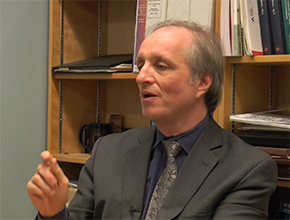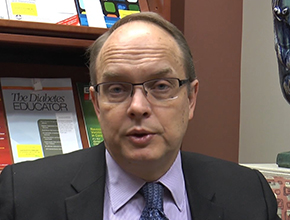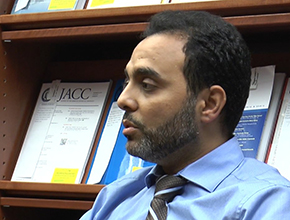Roman Jaeschke: Good afternoon. Welcome to another edition of McMaster Perspective. We have a pleasure to interview today Dr. Mark Crowther, Head of Laboratory Medicine Department at McMaster University, and a person who for the last several years has participated in the creation of practice guidelines in hematology and mostly in thromboembolism. He agreed to be interviewed remotely, so I will be asking questions here and he will be answering them in a different place. Dr. Crowther, the first question is: We are at the beginning of 2016. I wonder if you could reflect on 2015 at the developments and issues which caught peoples’ attention in hematology and thromboembolism during the last 12 months.
Mark Crowther: The year 2015 has been quite a momentous year in many aspects of both thromboembolism and hematology. In thromboembolism, we have continued evidence that the new oral anticoagulants – rivaroxaban, apixaban, dabigatran, edoxaban, and others – are really quite revolutionary in terms of their ability to care for patients with or at risk of thromboembolism. In fact, I think the evidence that has become available does confirm that these drugs are much more easy to use than the traditional agents, such as warfarin, and are safer in terms of their risk of major bleeding and death. Certainly, we are looking for evidence that they can be used in selective populations, such as patients with cancer, patients with heparin-induced thrombocytopenia, or in patients with the antiphospholipid antibody syndrome. We do not have that evidence yet but lots of studies are going on, looking at these issues.
In hematology perspective, there has been a whole series of revolutionary new treatments explored in the last year. Probably the most important, which was announced quite recently at [the annual meeting of] the American Society of Hematology, is evidence that eltrombopag, which is a drug used to treat immune thrombocytopenic purpura, actually is almost curative in a rare disease called aplastic anemia, which affects young people; probably within 5 minutes of the presentation at [the annual meeting of] the American Society of Hematology it became the standard of practice.
The other area where there is a ton of interest right now is in highly-focused, specific therapies for diseases such as multiple myeloma and chronic lymphocytic leukemia (CLL). A whole series of drugs are becoming available that may actually be curative in these diseases – diseases which were traditionally regarded as incurable.
I think that in 2016 and beyond, we will start to see these practices actually moving into day-to-day clinical practice. The problem, of course, is going to be how we pay for them. The new hematology therapies are going to be very expensive and are probably only going to be able to be delivered at individual centers. I suppose the advantage, however, is if you can cure myeloma in one take, you are going to avoid long-term need for therapy, which currently spans many years and may involve multiple different types of chemotherapy.
 English
English
 Español
Español
 українська
українська




